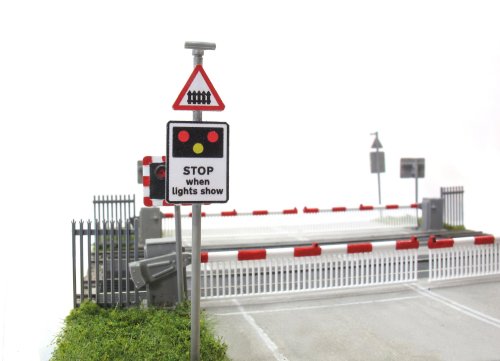Plenty of practical work from me in the latest issue of BRM.
Asked to build a level crossing - I built two! It seemed a good idea to have a go at both the classic ex-Airfix version, and the latest from Peco. Comparing the two kits, you can see what over half-a-century of development work in the plastic kit world means. There's also a huge difference between the two models as nowadays, the scene is much more complicated as ever more stringent safety considerations take effect.
Asked for advice by a reader on improving the running of his latest aquisition, I offered to take a proper look if the model was posted to me.
What arrived, was a very old Hornby Black 5, that once serviced and with a set of extra pickups added, runs silky smooth. It might not be as good a model as the very latest version, or even the one we are promised for the future, but I think a loco like this will still perform perfectly well on most people's layout. If you follow my maxim that modelling to a consistant standard instead of having one or two superior items, looks better, I think it's an excellent fit.
BRM TV sees me using a modestly priced static grass applicator to fluff up a diorama - proving that even the cheaper tools can do a good job if used with a bit of care.
My camera has also been out again.
Alexandra Sidings ticked the "layouts Phil would like to build" when I saw it at Shepton Mallet a few weeks ago. Small space O gauge with buckets of atmosphere, it wasn't the easiest to shoot, I'm glad I use a small camera, but the results are lovely.
Blakey Rigg provided a rare chance to tackle some S gauge. High-quality modelling, but with an interesting industrial countryside scene. There's a lot of foreground to this model, and I think I managed to capture this. S is a scale I'd love to dabble in, but aside from having too many projects on the go, I can't do the imperial measurement thing. Fortuanatly, others can, and we can enjoy their work.





1 comment:
Dear Phil, Re the boom barrier / AHB level crossing, with all due respect to a nice little model, the road advisory sign should be placed to the left of the Flashing Lights Pole,and angled towards the road, to ensure the oncoming road traffic has a clear view of both the road sign, and the AHB Pole. As an aside, I was once of the view that the yellow warning light was a good idea, however, the yellow light, instead of causing the motorist to slow down, which was the intent, it seems to encourage too many motorists to take it as an indication to race the booms.In Australia, we long ago stopped the red-yellow-green traffic light sequence, and replaced it with red-green for just that reason, best wishes and regards from Australia.
Post a Comment